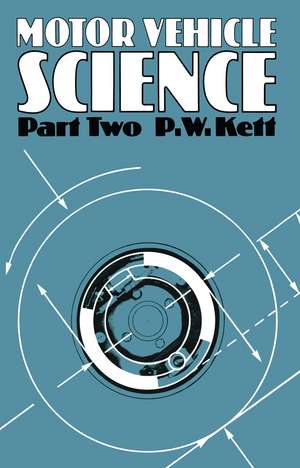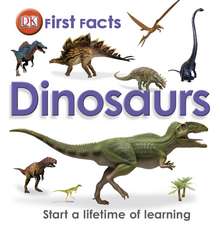Motor Vehicle Science Part 2
Editat de P.W. Ketten Limba Engleză Paperback – 19 oct 2011
Preț: 586.23 lei
Preț vechi: 689.68 lei
-15% Nou
Puncte Express: 879
Preț estimativ în valută:
112.18€ • 119.95$ • 93.53£
112.18€ • 119.95$ • 93.53£
Carte tipărită la comandă
Livrare economică 18 aprilie-02 mai
Preluare comenzi: 021 569.72.76
Specificații
ISBN-13: 9789400959453
ISBN-10: 9400959451
Pagini: 416
Ilustrații: XVI, 398 p.
Dimensiuni: 140 x 216 x 22 mm
Greutate: 0.48 kg
Ediția:Softcover reprint of the original 1st ed. 1982
Editura: SPRINGER NETHERLANDS
Colecția Springer
Locul publicării:Dordrecht, Netherlands
ISBN-10: 9400959451
Pagini: 416
Ilustrații: XVI, 398 p.
Dimensiuni: 140 x 216 x 22 mm
Greutate: 0.48 kg
Ediția:Softcover reprint of the original 1st ed. 1982
Editura: SPRINGER NETHERLANDS
Colecția Springer
Locul publicării:Dordrecht, Netherlands
Public țintă
ResearchCuprins
1. Materials (A).- 1.1 Heat treatment.- 1.2 Materials and testing.- 1.3 Metal fatigue.- 1.4 Safety factor.- 1.5 Shear strain.- 1.6 Punching holes in a material.- 1.7 Bending and torsion.- Exercises.- 2. Engine indicator diagrams (B2).- 2.1 Engine indicators.- 2.2 Converting an indicator diagram.- 2.3 Interpretation of indicator diagrams.- 3. Combustion processes (B3).- 3.1 Specific heat capacity of a gas.- 3.2 Expansion and compression of gases.- 3.3 Engine temperature and pressure calculations.- 3.4 Efficiency of an engine.- 3.5 General comparison between petrol and compression ignition engines.- 3.6 Octane rating.- 3.7 Cetane number and diesel index.- 3.8 Detonation.- 3.9 Fuel additives.- 3.10 Volumetric efficiency.- Exercises.- 4. Air-fuel ratios and exhaust products (B4).- 4.1 Air-fuel ratios: petrol engine.- 4.2 Air-fuel ratios: CI oil engine.- 4.3 Determination of air-fuel ratios.- 4.4 Mixture strength and side effects.- 4.5 Air-fuel ratio and power output.- 4.6 Combustion calculations.- 4.7 Consumption loop or hook curve.- Exercises.- 5. Archimedes’ Principle (B5).- 5.1 Hydrostatics and hydraulics.- 5.2 Archimedes’ principle.- 5.3 Floating bodies.- Exercises.- 6. Fluids and energy (B6).- 6.1 Pressure.- 6.2 The manometer.- 6.3 Energy of liquids.- 6.4 Bernoulli’s law.- 6.5 Quantity flow.- 6.6 The Venturi unit.- 6.7 Actual flow of liquids through an orifice.- 6.8 Gas velocities.- Exercises.- 7. Hydraulic mechanisms and machines (B7).- 7.1 Hydraulic machines.- 7.2 Hydraulic intensifier.- 7.3 Hydraulic brakes.- 7.4 The law of a machine.- Exercises.- 8. Variable torque, force and work done (C8).- 8.1 Variable torque.- 8.2 Work done.- 8.3 Couples.- Exercises.- 9. Angular motion (C9).- 9.1 Angular velocity and angular acceleration.- 9.2 Power.- Exercises.- 10. Inertia force, mass and acceleration (C10).- 10.1 Mass.- 10.2 Newton’s first and second laws of motion.- 10.3 Momentum.- 10.4 Braking efficiency and stopping distance.- 10.5 Newton’s third law of motion.- Exercises.- 11. Potential and kinetic energy (C11).- 11.1 Potential energy.- 11.2 Kinetic energy.- 11.3 Conservation of energy.- 11.4 Conservation of momentum.- 11.5 Energy loss when bodies collide.- 11.6 Moment of inertia.- 11.7 Kinetic energy of a rotating body.- 11.8 Radius of gyration.- Exercises.- 12. Tractive effort and tractive resistance (C12).- 12.1 Tractive effort.- 12.2 Tractive resistance.- 12.3 Undergeared and overgeared vehicles.- 12.4 Engine characteristics and gear ratios.- 12.5 Constant power and tractive-effort/road-speed curves.- 12.6 Data and methods for setting final drive and gearbox ratios.- Exercises.- 13. Centripetal force and balancing (C13).- 13.1 Centripetal acceleration.- 13.2 Centripetal and centrifugal force.- 13.3 Balancing of rotating masses.- 13.4 Piston movement and inertia.- 13.5 Engine balance.- Exercises.- 14. Stability of vehicles in curved paths (C14).- 14.1 Vehicle on curved level road.- 14.2 Vehicle on curved banked track.- 14.3 Vehicle on a reversed banked track.- 14.4 Arched or hump-back bridges.- 14.5 Road dip or depression.- Exercises.- 15. Transference of wheel loading (C15).- 15.1 Vehicle weight transfer: retardation.- 15.2 Vehicle weight transfer: acceleration.- 15.3 Maximum possible acceleration: level road.- 15.4 Transferred weight: vehicle in curved path.- Exercises.- 16. Simple harmonic motion (C16).- 16.1 The conical pendulum.- 16.2 The Watt centrifugal governor.- 16.3 The simple pendulum.- Exercises.- 17. Relative velocity (C17).- 17.1 Definition and diagrams.- 17.2 Angular velocity of a link or lever.- 17.3 Relative velocity of points on a wheel.- Exercises.- Answers to Exercises.


